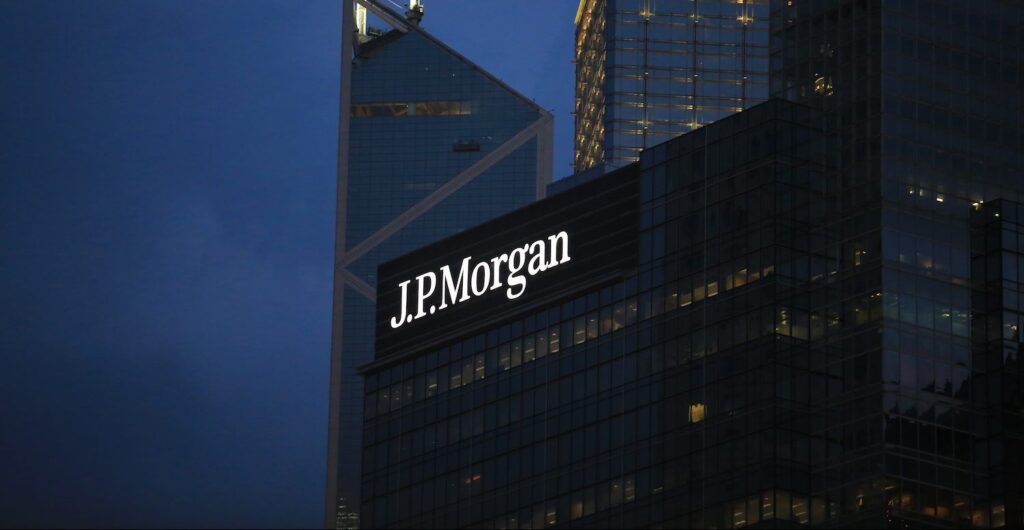The specter of stagflation looms large in the financial landscape, with investors increasingly fearful of a combination of stagnant growth and rising inflation. While discussions around this economic phenomenon were largely absent at the World Economic Forum in Davos earlier this year, the implications of Trump’s tariffs and escalating trade tensions have begun to reshape market strategies.
Understanding Stagflation
Stagflation, a term that merges stagnation and inflation, describes a troubling economic scenario characterized by high inflation rates, stagnating economic growth, and elevated unemployment levels. The International Monetary Fund (IMF) defines it as a condition where economic activity declines while prices soar.
Recent market activity suggests that financial analysts and investors are adjusting to this potential reality. Goldman Sachs’ “stagflation basket,” which includes investments in commodities and defensive sectors like healthcare, has surged nearly 20% this year. In contrast, the S&P 500 index has dipped by 4%, and Bitcoin, the leading cryptocurrency, has seen a decline of 10%.
Investor Sentiment Shifts
The growing concern over stagflation has altered investor sentiment, with many turning to strategies that prioritize defensive assets. Noelle Acheson, author of the Crypto Is Macro Now newsletter, noted that stock and bond prices are beginning to reflect expectations of lower growth alongside higher inflation. Interestingly, healthcare stocks are benefiting from anticipated deregulation, which offsets potential funding cuts.
Murmurs of stagflation have circulated since early 2022, but it is this year that markets have started to price in these risks, significantly influenced by tariffs and trade conflicts. Key indicators, such as inflation metrics and an inverted Treasury yield curve, suggest a creeping recession, while real-time GDP trackers indicate a sharp contraction in economic activity.
The Case for Bitcoin as a Safe Haven
In an environment conducive to stagflation, assets perceived as stores of value, like Bitcoin, should theoretically thrive—just as gold has, with a notable 13% increase this year. However, Bitcoin’s anticipated role as digital gold has not yet materialized. Instead, its correlation with U.S. stocks has strengthened, indicating a shift in its market dynamics.
Noelle Acheson acknowledges that while Bitcoin may currently be viewed as a risk asset, its long-term potential as a safe haven remains intact due to its capped supply and global utility. She emphasizes that the market is presently in a risk-averse phase, which has led to reduced positions in macro portfolios. However, she remains optimistic about future inflows into the crypto market once the economic landscape stabilizes.
Key Factors Supporting Bitcoin’s Future
Acheson highlights several tailwinds that could bolster Bitcoin’s resurgence, including increasing education about cryptocurrencies, the emergence of new institutional services, and the development of regulatory frameworks that will foster institutional investment and retail participation. These elements are crucial for Bitcoin’s long-term growth trajectory.
Debating the Stagflation Narrative
Not everyone agrees with the stagflation narrative. Markus Thielen, founder of 10x Research, argues that the market may be misinterpreting the situation. He suggests that we are witnessing a temporary spike in commodity demand due to front-loaded tariff impacts, which may not sustain in the long run. Furthermore, uncertainties surrounding other cryptocurrencies, such as Dogecoin (DOGE), may be dampening growth expectations.
Looking ahead, Thielen speculates that a dovish stance from the Federal Reserve could revitalize interest in risk assets, including Bitcoin. Recent developments, such as Trump’s decision to halt plans to double tariffs on Canadian steel and metal imports, coupled with the Fed’s impending rate review, could create a more favorable environment for growth-oriented investments.
In conclusion, while stagflation concerns have shifted investor focus away from traditional assets like Bitcoin and the S&P 500, the potential for recovery remains contingent on broader economic indicators and policy decisions. As the market navigates these uncertainties, both caution and opportunity lie ahead for savvy investors.



